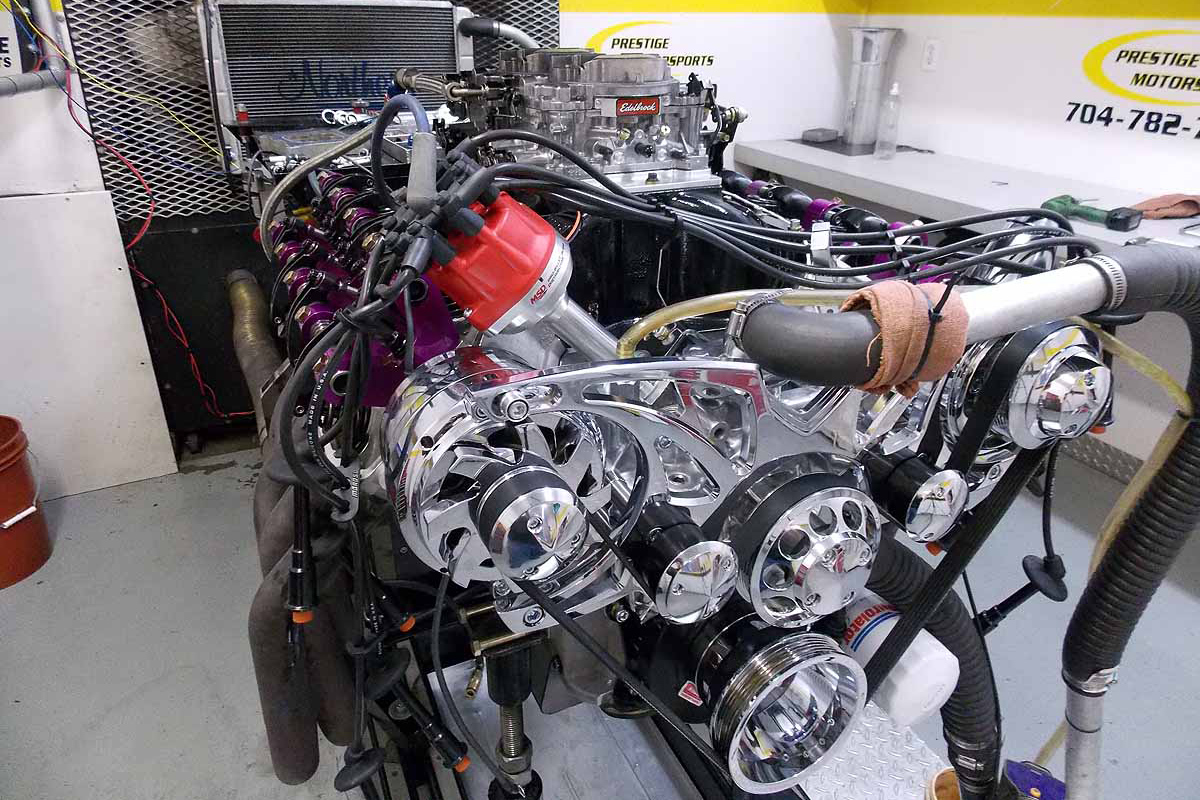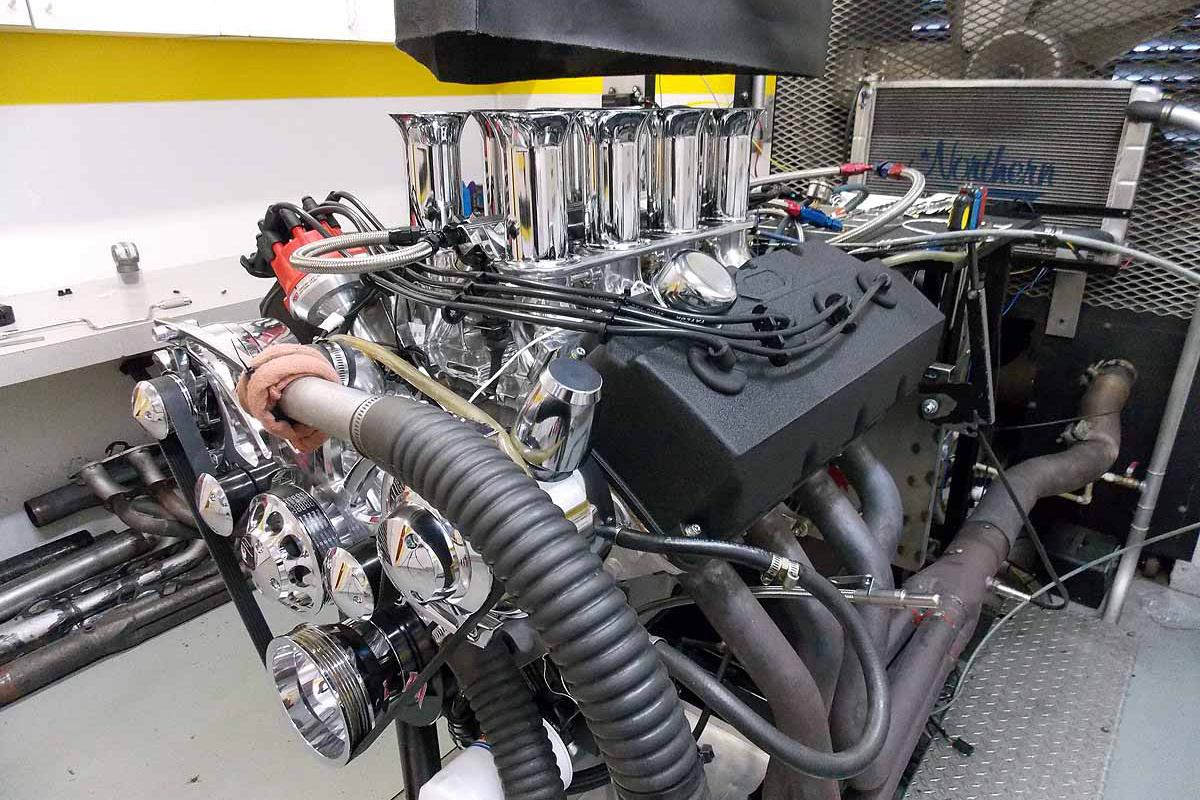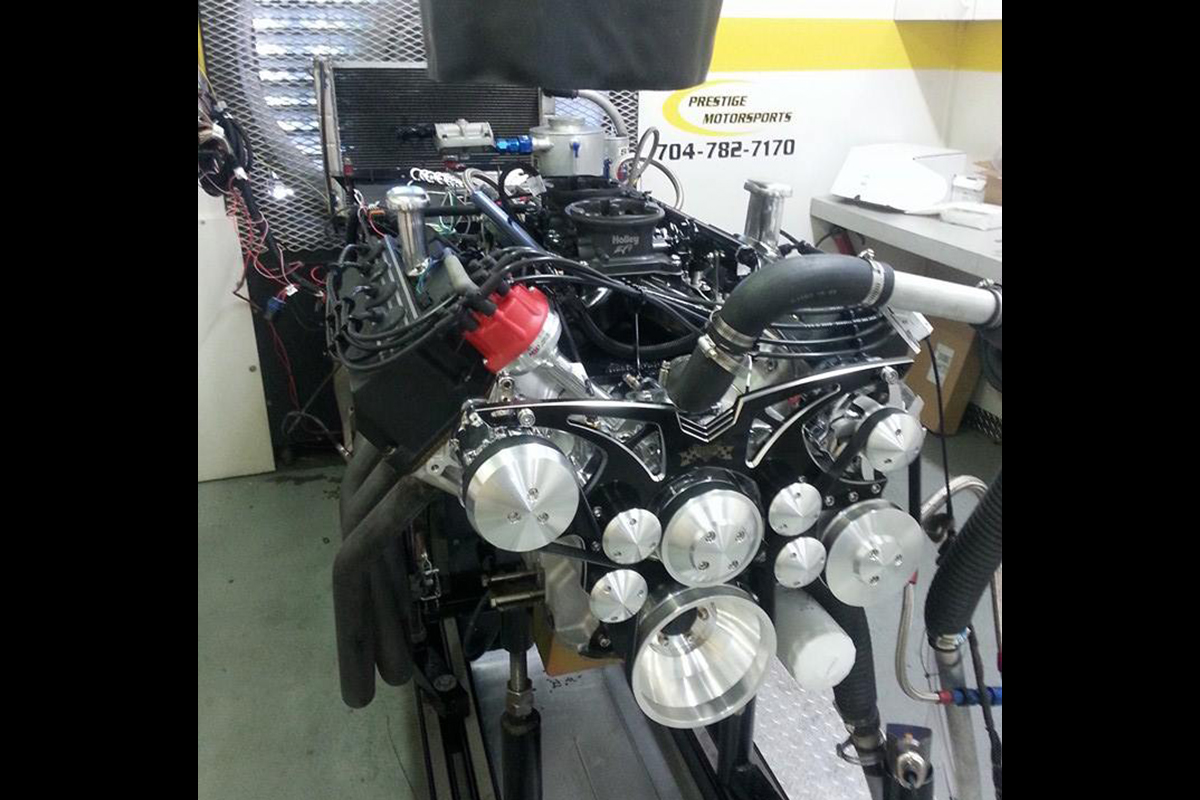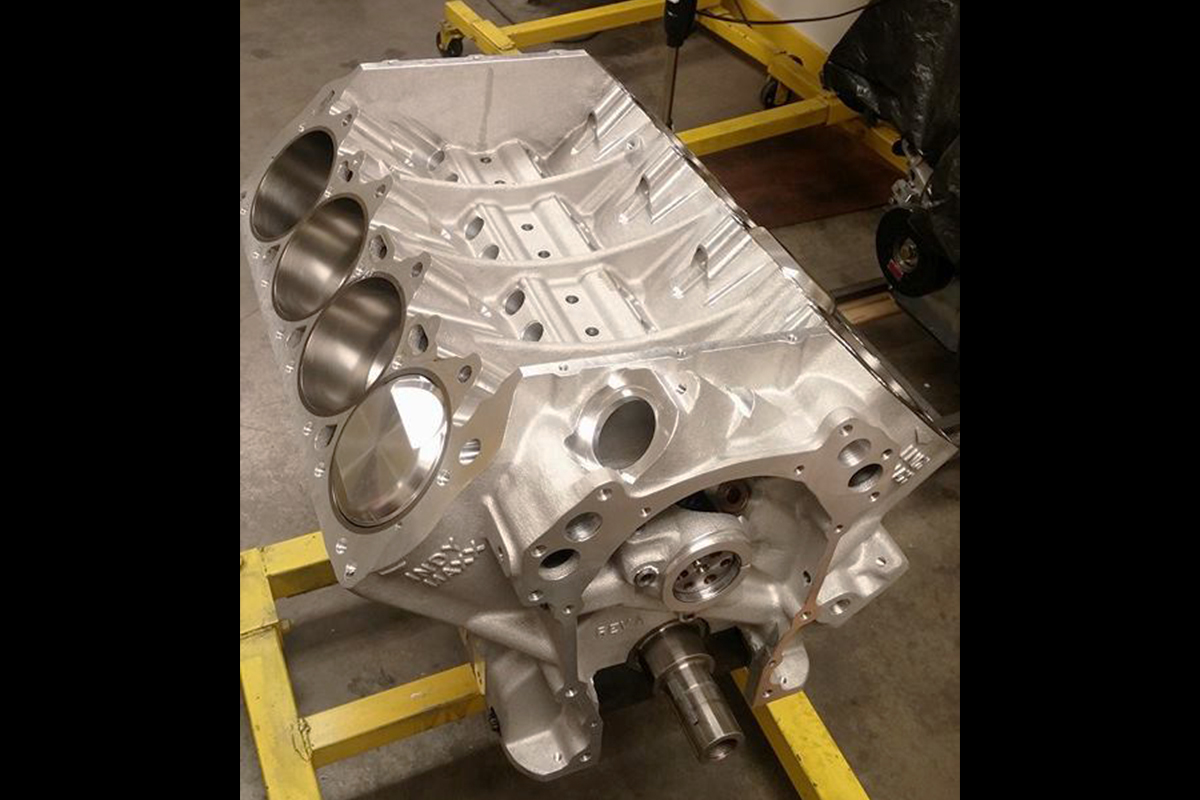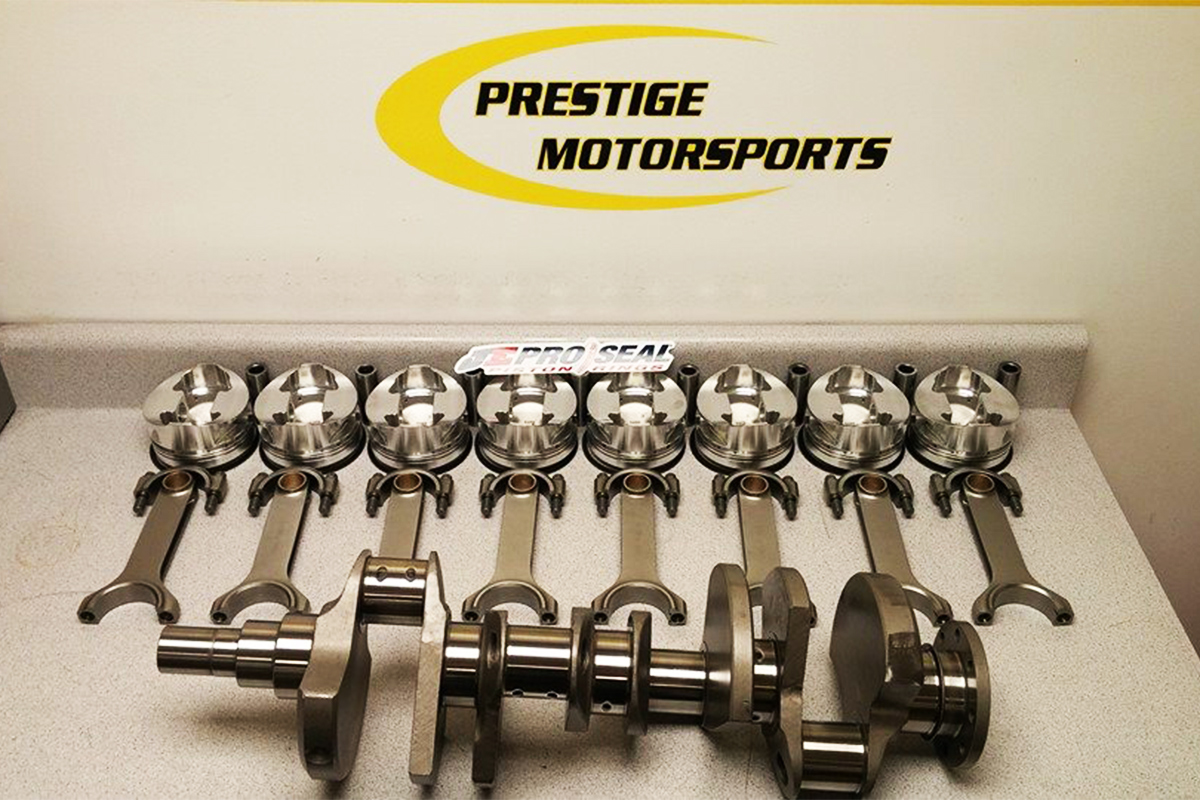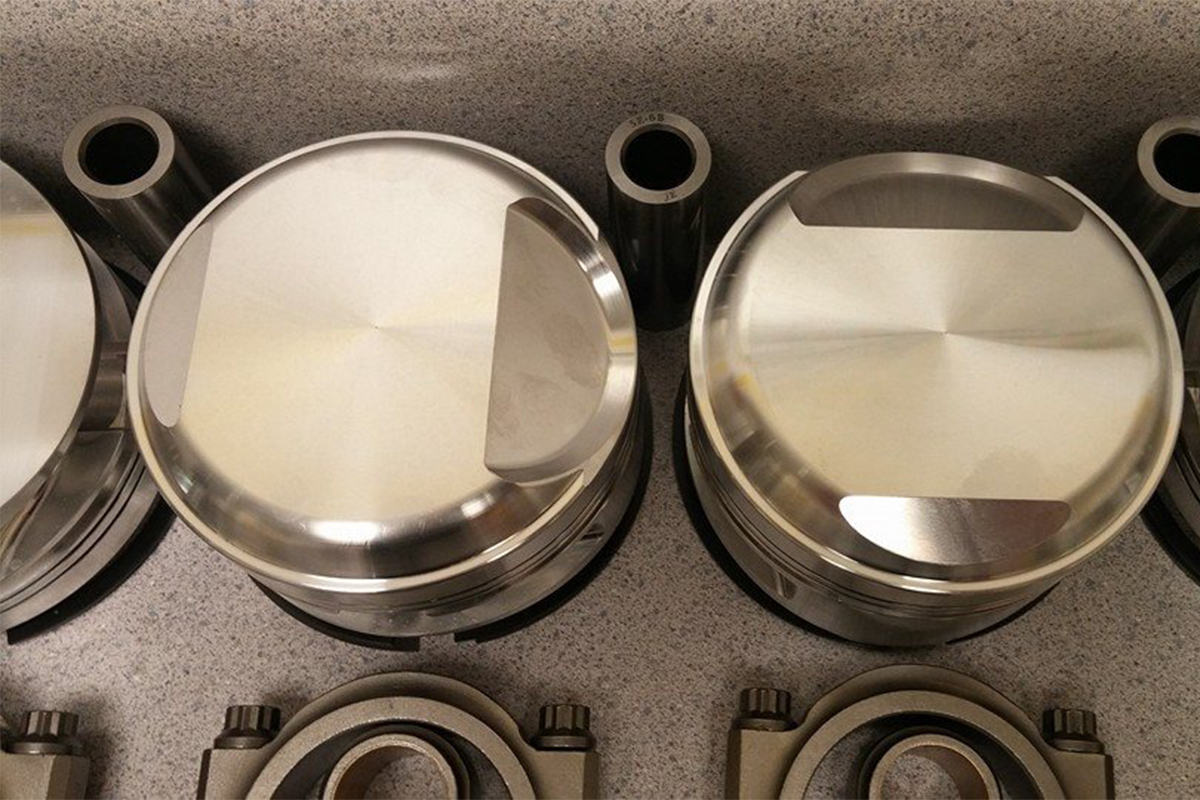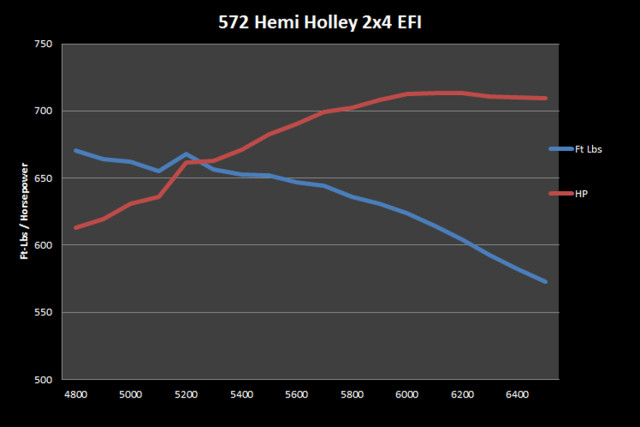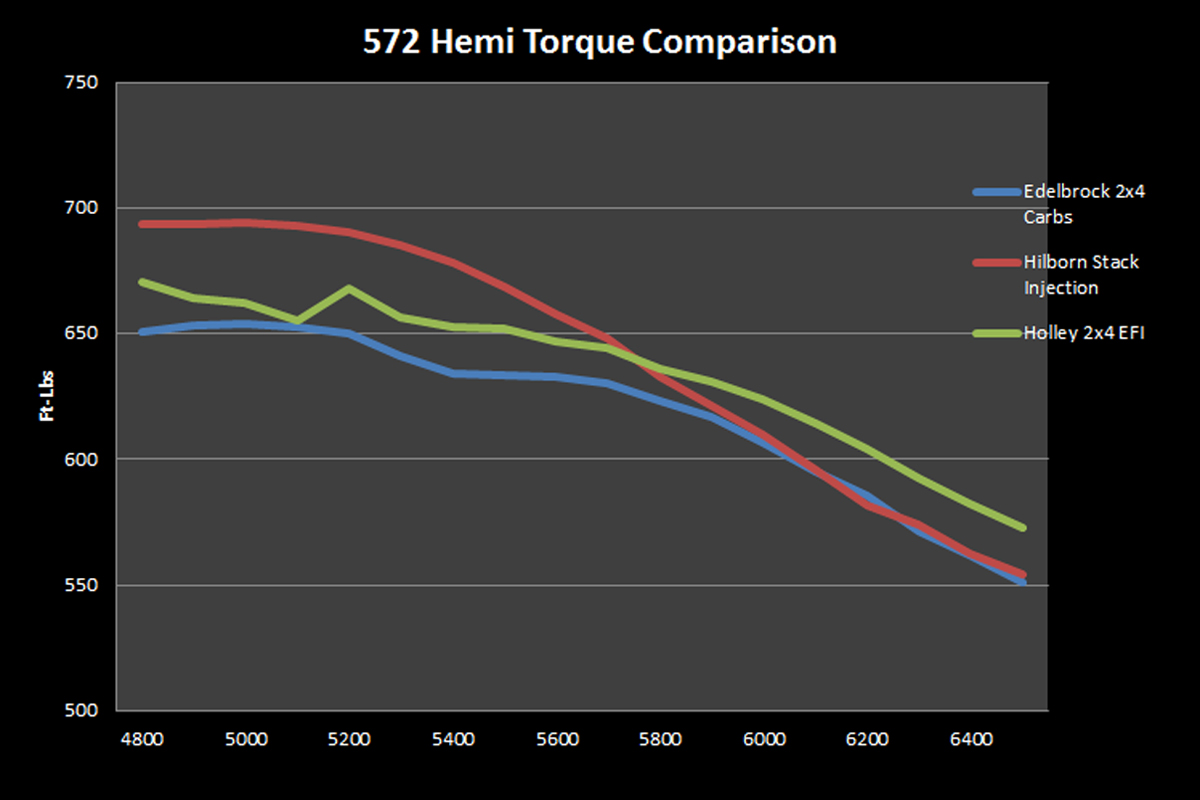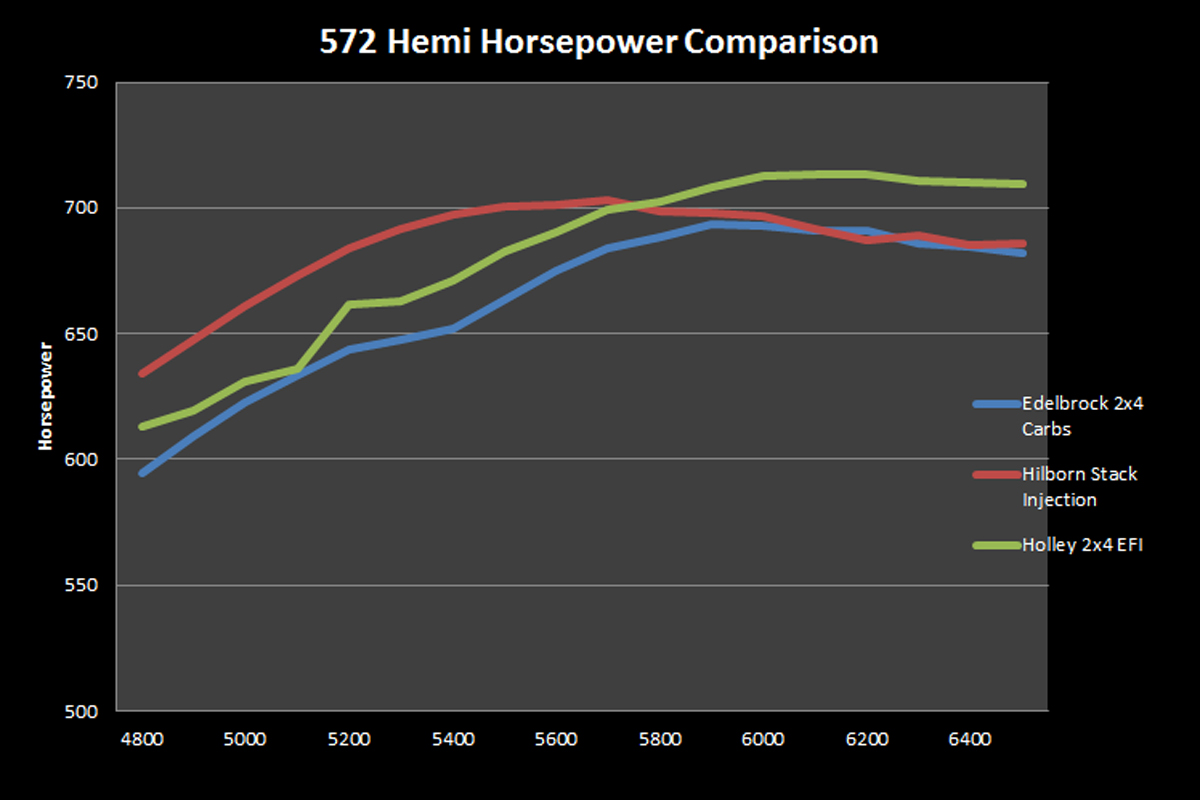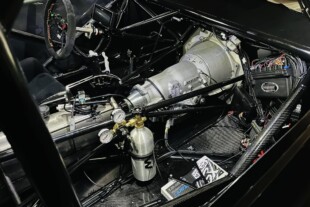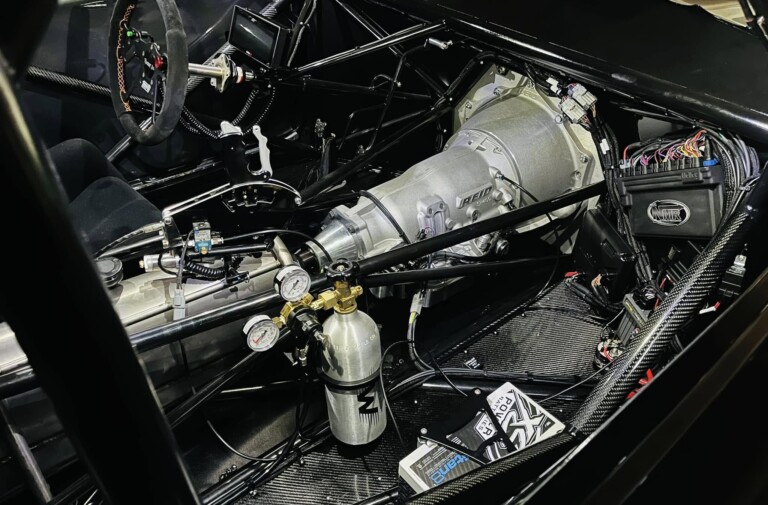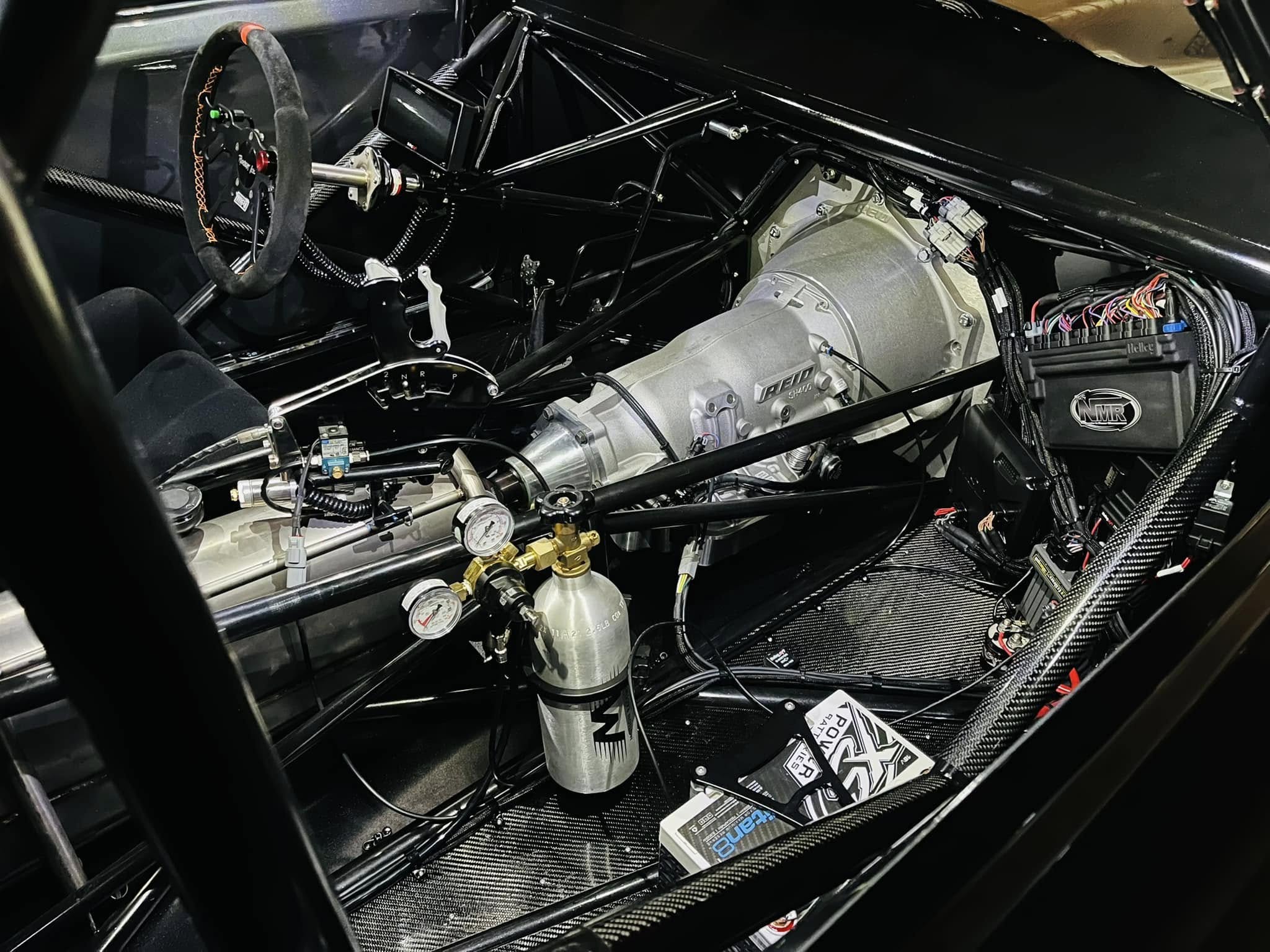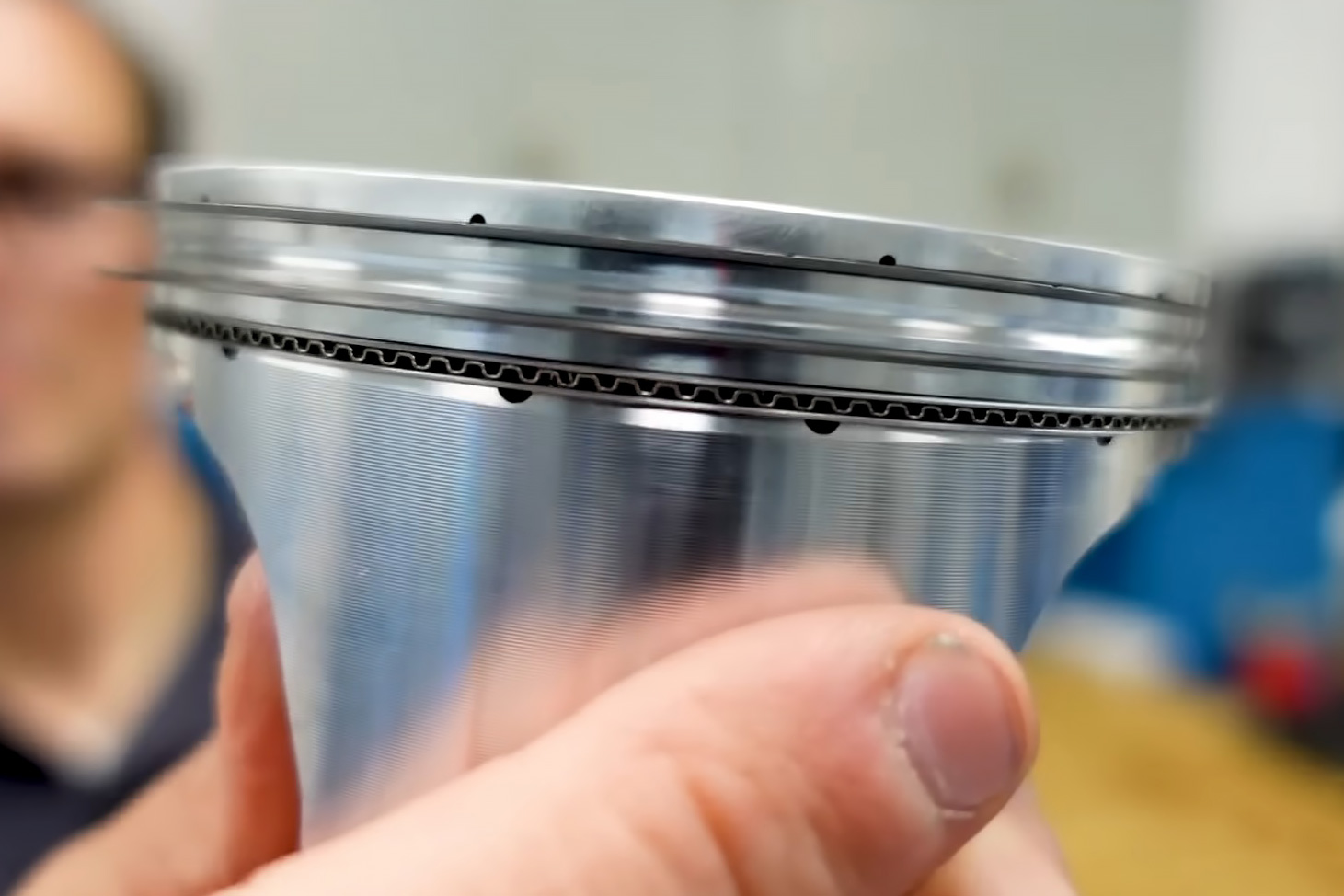Many engines are run across the in-house dyno at Prestige Motorsports. We’ve seen several of their builds show up in the pages of EngineLabs. Previously we covered their 572 cubic-inch Hemi on the dyno comparing a dual-quad setup from Edelbrock verses a Hilborn Injection individual-runner system. The results of that comparison can be found here.
Recently, Prestige built another of their Mopar monsters, this time with a dual-throttle body fuel injected system from Holley. We thought it would be a great opportunity to follow up and get a comparison on all three fueling systems tested.
Prestige Motorsports provides power numbers on their 572 cubic-inch Hemi. The previous engine compared the Edelbrock dual-quad carburetors (left) and the Hilborn Injection 8-stack EFI (center) sytems. The latest test added a pair of Holley 4BBL throttle bodies to the mix (right).
In the previous article, the Edelbrock carbureted setup and the Hilborn stack injection were tested using the same engine. The most recent build was a different engine, but it was comprised of the same internals.
Inside the aluminum block from Indy, Prestige dropped an Eagle 4340 forged-steel crank and H-beam rods. Custom JE Pistons top off the rotating assembly. A custom ground, solid-roller camshaft from Comp Cams brings life to the valve train. Aluminum cylinder heads from Edelbrock seal off the cylinders. Compression is pump-gas-friendly at 10.5:1.
Both engines used for testing were comprised of the same internals. An aluminum block and an all forged rotating kit form the short-block foundation.
The front pulley kit from March Performance is slightly different than the previous build. The addition of an AC compressor and some idler pulleys would have very little effect on the overall power of the engine. Prestige does add fluid to the power steering pump and allows the alternator to charge the dyno battery in an effort to simulate a real world situation. However, the AC compressor is left empty and the compressor clutch is never activated during testing.
The fuel system this time is Holley’s Terminator system featuring two 1000-CFM four-barrel throttle bodies. With the additional CFM available through the throttle bodies, the top end power exceeds both the individual stacks and the carbureted setup. That comes with no surprise.
In the previous test, Prestige found the power curves merging together at the top end, highlighting that the air intake was at its max. The increase in power with the larger throttle bodies confirms the air restriction was through the throttle plates on the previous systems. They weren’t able to provide the air required by the lungs of this Mopar monster.
The impressive part is the torque curve didn’t change in shape from the carbureted version, but just moved up all the way through the RPM band. Unlike a carburetor, the EFI setup doesn’t require a strong booster signal to feed the cylinders. The result is a better air-fuel mixture in the lower RPM range and a higher torque curve.
Power curves comparing all three fuel systems. The individual throttle bodies produced the most low end torque while the dual-quad EFI grabbed the peak HP spot.
Of course, neither four-barrel setup was a match for the Hilborn stacks prior to 5800 RPM. As discussed in the previous article, that has everything to do with reversion pulses being eliminated with individual runners. The theory proves true at the top end, too. As the valve events speed up, reversion pulses reduce and have less of an effect on the dual-quad manifolds.
All three fuel systems win awards and surely did not disappoint. The Hilborn individual stacks are still the top-dog for low-end grunt and good looks. The Edelbrock dual-quad carburetors win the Good Samaritan award for damage control on the wallet. And of course, peak horsepower bragging rights go to the Holley dual-throttle bodies.



